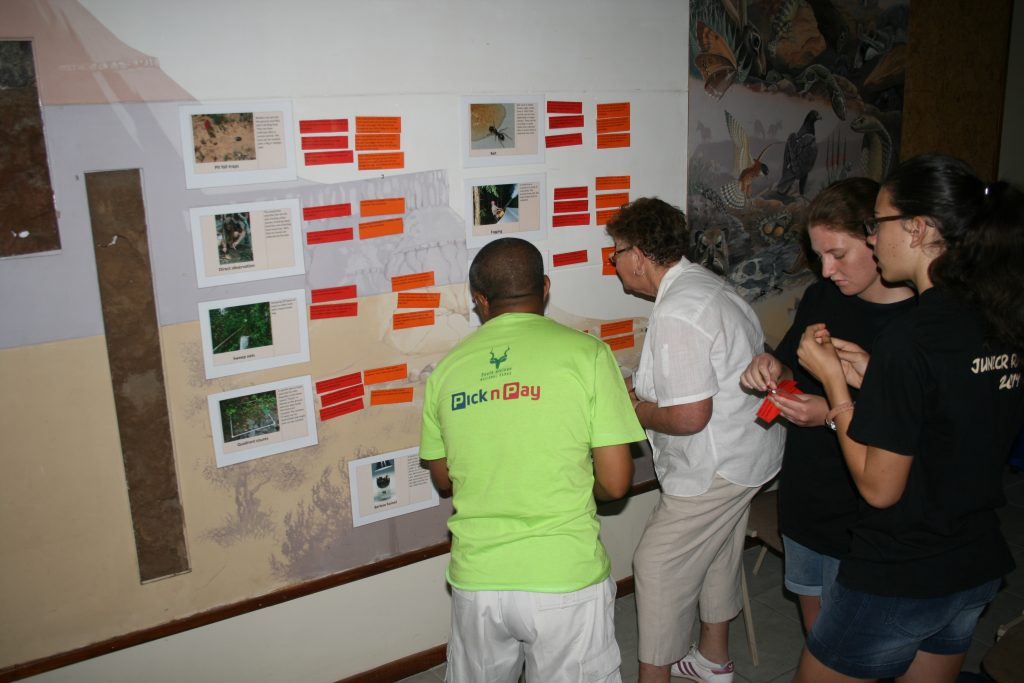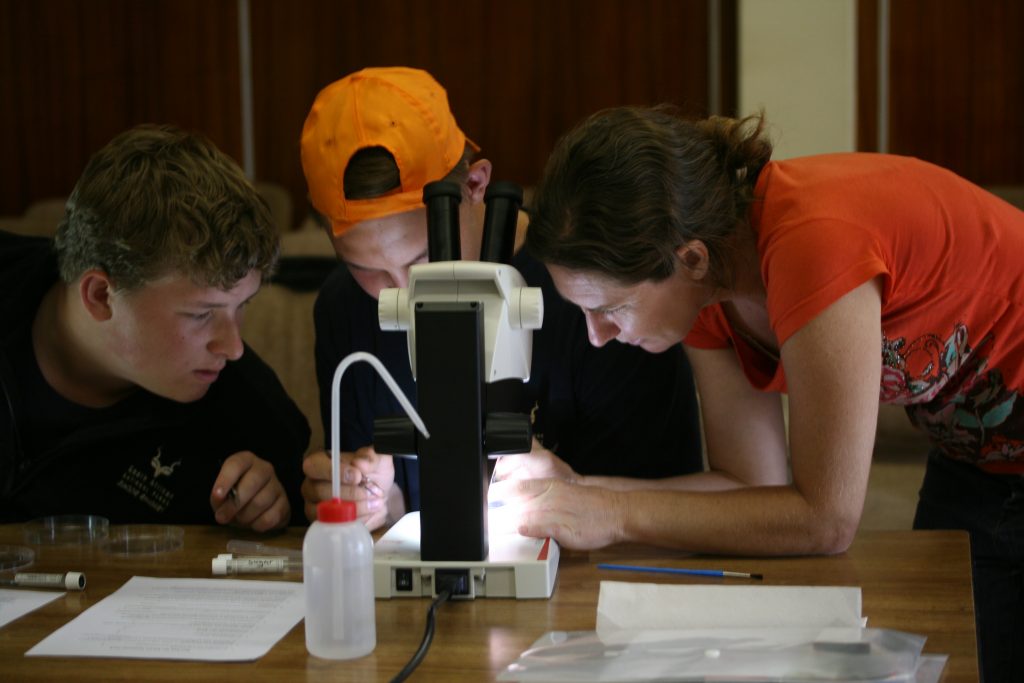Ants play important roles in ecosystems, yet they often go unnoticed by visitors to the park and field rangers. To raise awareness of the importance and diversity of these tiny insects, the Iimbovane Outreach Project presented a training session for SANParks junior rangers in the Karoo National Park.
The session, titled “Amazing Ants of Karoo National Park”, gave the junior rangers an overview of the significant role that ants play in ecosystems and how scientists identify different species. The session also introduced the junior rangers to sampling methods, and through trying each method the rangers came to see the advantages and limitations of each method.
The “coolest” part of the training session came when the junior rangers look at the ants under a microscope and using the training they received, to identify the ants. Seeing the ants from up-close, they suddenly stopped being the bountiful pests in sugar pots and became a creature of fascination.
Some of junior rangers described the “coolest” thing of the training, as:
“The spines on the ants are cool and their mouths.”
“I learned that they can list up to 20 times their weight. I also learned that they have a petiole and spines.”
“Now I have a better understanding about the social life of ants and how they interact and communicate with each other.”
The Iimbovane Outreach Project has been monitoring the ant diversity of the Karoo National Park since 2006. To date, the project has identified approximately 63 morphospecies in the Karoo National Park, many of which are important for seed dispersal of indigenous plant species, the breakdown of organic material, soil turnover and nutrient recycling. Anoplolepis steingroeveri, Crematogaster melanogaster and Meranoplus cf. peringueyi are some of the most common and abundant species found in the Karoo National Park.
The SANParks Junior Ranger Programme is a Community Youth Development programme aimed at having young volunteers working towards assisting in the park and learning about conservation.

